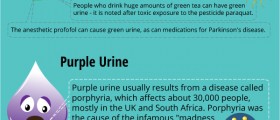
Antibiotic discovery and traits
Antibiotics are a form of anti-bacterial medications used to combat infections and eliminate or hamper bacteria. Practices using moldy bread to treat a wound have existed since the days of Ancient Egypt. The anti-bacterial traits of mold were known more than 3 millennia ago, but actual discovery of Antibiotics is attributed to Alexander Flemming who in 1930 analyzed the mold and ascertained its antibiotic properties, discovering Penicillin. Penicillin is utilized to this day in the ear, respiratory tract, dental and skin infection treatment. Antimicrobials, which include anti-frugal, anti parasitic and anti-viral drugs, also include Antibiotics. The word antibiotic originates from the merging of two Greek words, bios and anti, which mean life and against, respectively. Viruses, like the common cold, bronchial or flu virus are not affected by antibiotics, and the antibiotics consumed for this purpose can be harmful to the patient as they can assist in the creation of bacteria which can resist its effect, rendering them impervious to future attempts at elimination via an antibiotic. Those antibiotics that destroy bacteria, named bactericidal antibiotics, differ from the ones which merely force them to cease multiplication, named bacteriostatic antibiotics. Another kind of antibiotics, are broad-spectrum antibiotics, they are versatile due to the fact they can affect a significant number of different infections. Tetracyclines are a good example of this kind of drug. Less versatile ones are called narrow spectrum antibiotics.
Negative Side Effects of Antibiotics
Though largely beneficial, antibiotics can carry a slew of negative side effects such as diarrhea, vomiting and nausea, which could deter from their usage. These mostly relate to the time of ingestion. Side effects are also produced by the fact that any bacteria can be destroyed by antibiotics, including the beneficial ones. Allergies are also a common problem, as they can lead to anything from rashes to breathing problems.
Different kinds of Antibiotics and their evolution
Penicillin and cephalosporins are utilized in combination with amino glycosides, such as Gentamicin, to eliminate certain bacteria, but only in limited time periods and dosages, due to the fact prolonged use can lead to issues with the kidneys. Cephalosporins like Cephradine are more modern versions of antibiotics, used to combat pneumonia, bronchitis, tonsillitis and a variety of infections of the skin.
With the ever changing evolution of diseases and infections, developing new remedies is a difficult but continuous task. Also important is the reduction of negative side effects of said remedies. While no cure is evident for certain ailments, treatment has come far and there is at least partial progress reported with many of the cases.

















Your thoughts on this
Loading...